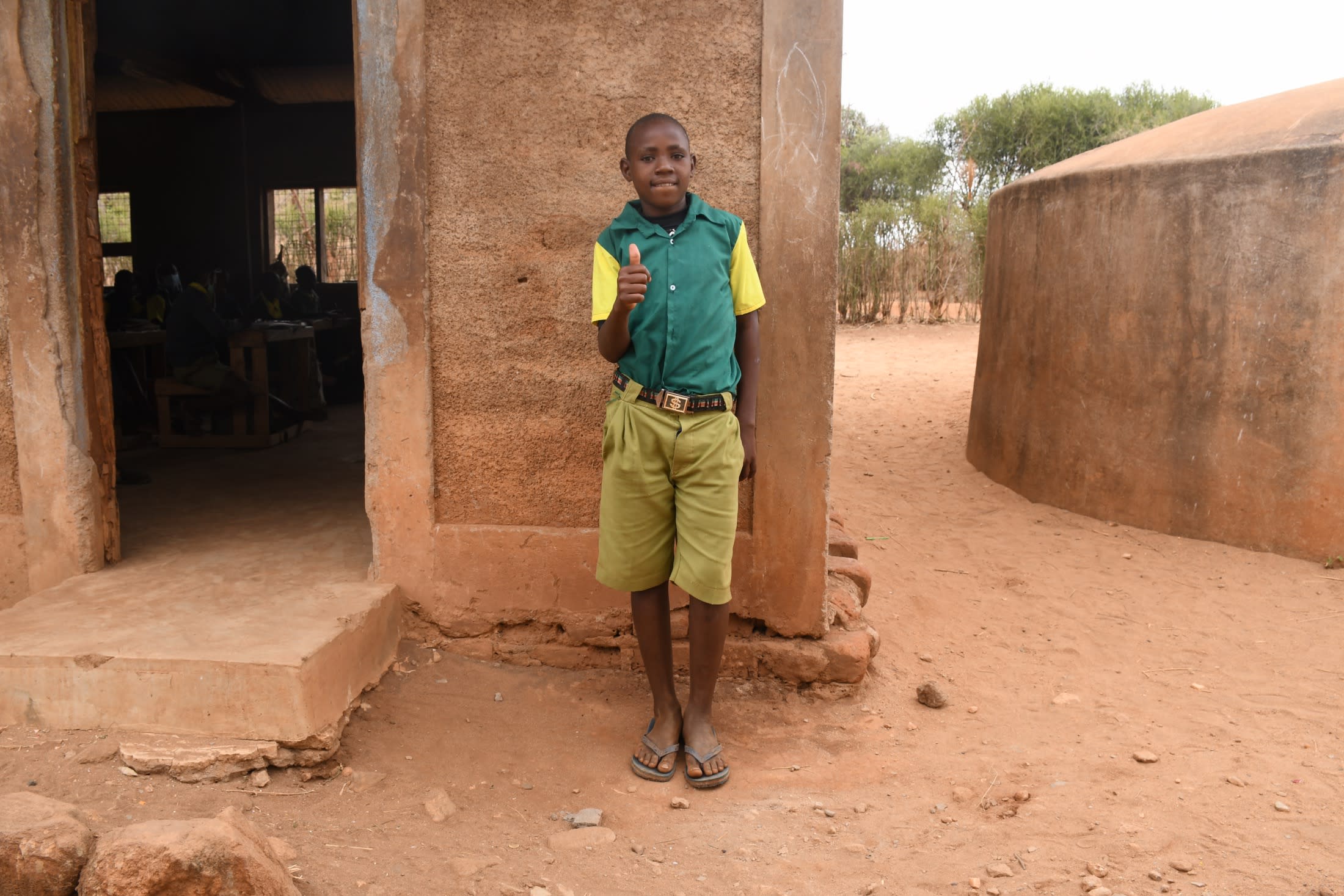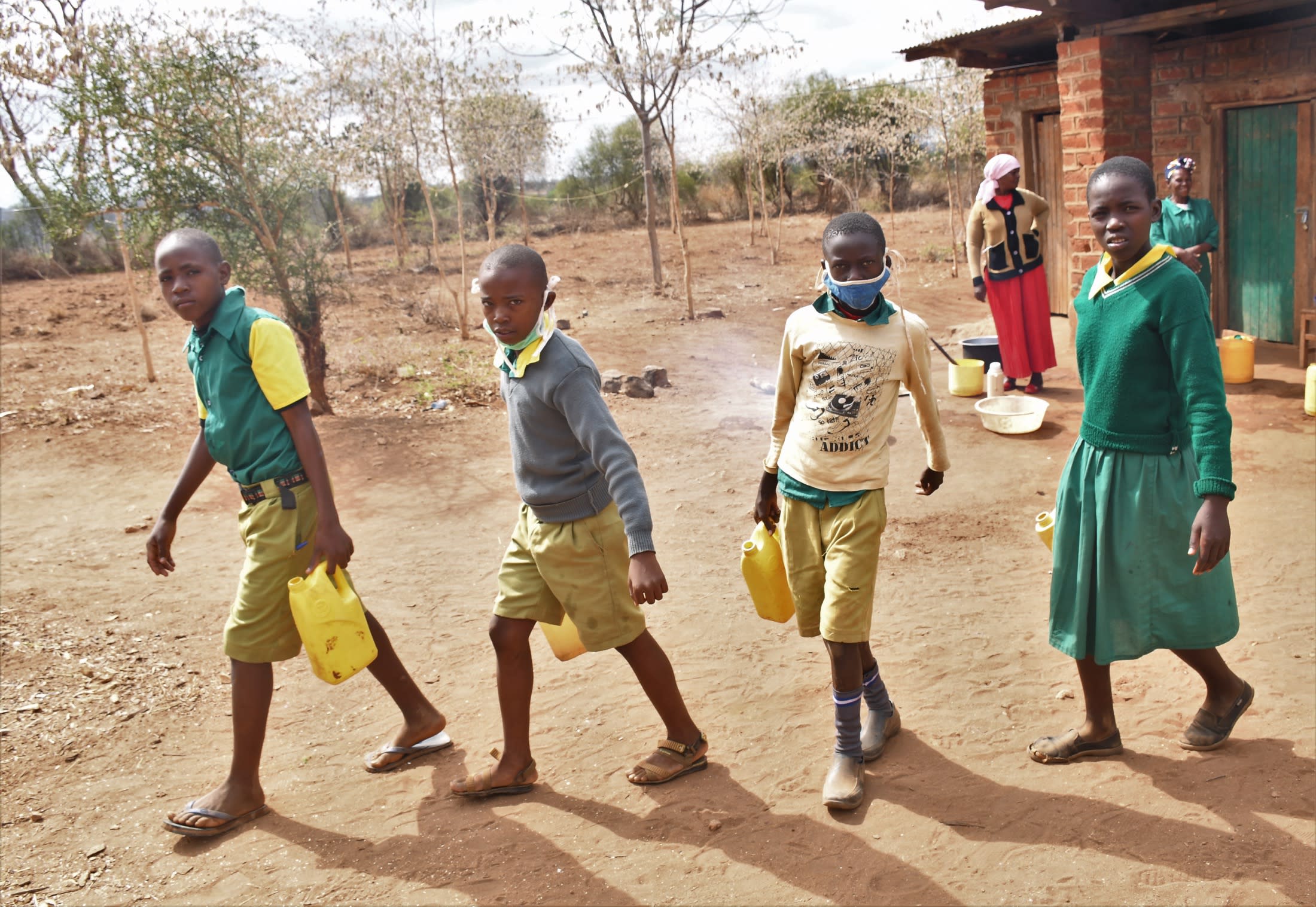Water used by the 235 students and staff of Tyaa Kamuthale Primary School is mainly collected by students each morning on their way to school from the Tyaa River, nearly two kilometers away. However, the river is seasonal, offering insufficient water throughout the entire year, and is contaminated by open defecation from animals and humans nearby.
The only alternate water sources are a small plastic rain tank and a broken 20,000-liter cement rainwater tank on the school's campus. The top opening of the larger tank does not close, so it collects dust and bird droppings, making its water also unsafe for human consumption. Neither can hold enough water to solve the school's current water crisis.

Regardless of which source it comes from, students are forced to use dirty, contaminated water. Subsequently, they are prone to suffering from water-related illnesses like stomach pains, typhoid, dysentery, and amoebas.
Kimanzi M. (in the photo below), 14, said, "I have to carry water in a jerrycan to school each morning during the dry season, which leaves me exhausted upon school arrival. The water in the tank is also inadequate, which leaves me thirsty and unable to fully concentrate on learning."

Most students, like Kimanzi, arrive late to school and are so tired from the long walks from the river while carrying a jerrycan full of water along with their books that they struggle to focus on their studies.
He continued, "The scoop holes in the river are also contaminated by the animal droppings and dust that are swept by the wind. I have no option but to drink that water, which has contributed to stomach upsets and discomfort, which further impairs my academic performance negatively. The water in the school is also not enough to clean our classrooms and latrines, thus leading to poor levels of hygiene and sanitation, which makes the learning environment uncomfortable."
Absenteeism is a challenge for the school and is limiting its academic success. Students are often absent because of exhaustion, sickness, or not wanting to go without water during the day, and they pay the price academically.
Another negative aspect of the water crisis is conflict. The school administration and the community have been at odds because students pass through farms owned by community members and damage their crops while fetching water.
"Being the senior teacher, I often spend a lot of time handling disputes between the parents and school concerning students trespassing [on] the parents' land. I would have used that time to teach my students," said teacher James Gathuo.
Mr. Gathuo went on to describe the challenges his students face academically without sufficient water: "Most of the students also arrive late to school while others are absent, which makes learning a challenge. The affected students miss out on most of the covered classwork. With the current Competency-Based Curriculum syllabus, it's challenging to teach because most of the subjects require practicals (exams) that need water."
The installation of this water point will ensure a clean, safe source of water for sufficient drinking water and the water needed to improve the hygiene and sanitation of the school. Time previously spent traveling long distances to collect water will be reallocated for students to focus on their studies, improving their academic success. And having a dedicated water source will hopefully foster a more positive relationship with the community in the future.
Rain Tank
We will build a 104,000-liter rain tank for this school, making the others look tiny in comparison. Because of how rarely it rains in Southeastern Kenya, this tank's large volume is designed to store as much water as possible during the seasonal rains, making more water available through the dry months. This water will benefit the students, teachers, and supplementary staff.
Parents will mobilize the materials needed for construction, including sand, stones, and water. They will also lend their strength and time to help with the construction. We will complement their materials with a skilled artisan to lead the project in addition to providing the tools, lumber, metal, cement, and gutter system.
As soon as the tank has time to cure, it can begin collecting rainwater for the school's use.
Training
We will train students and staff on sanitation, hygiene, and other topics for 1 day. Those in attendance will form a school health club that will promote good hygiene and sanitation practices both at school and at home. They will learn all of the steps to proper handwashing, how to treat water, and how to keep their environment clean. The school will also be taught how to best oversee and maintain their new rain tank and handwashing stations.
Handwashing Stations
A total of 3 handwashing stations will be installed upon the project's completion and before training. These are 1,000-liter plastic tanks fitted with 3 taps each, allowing 9 students to wash their hands at once. The student health club and school management will be responsible for making sure the tanks are filled with water and that a cleaning agent such as soap or ash is always available.

 Rainwater Catchment
Rainwater Catchment
 Rehabilitation Project
Rehabilitation Project

































